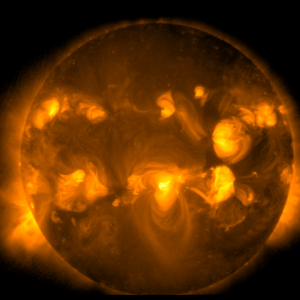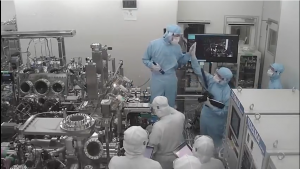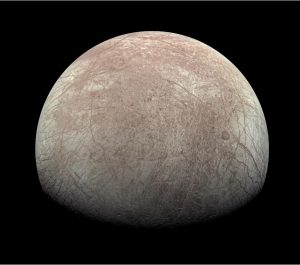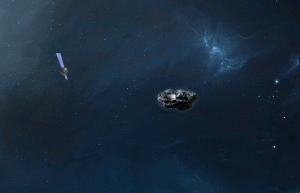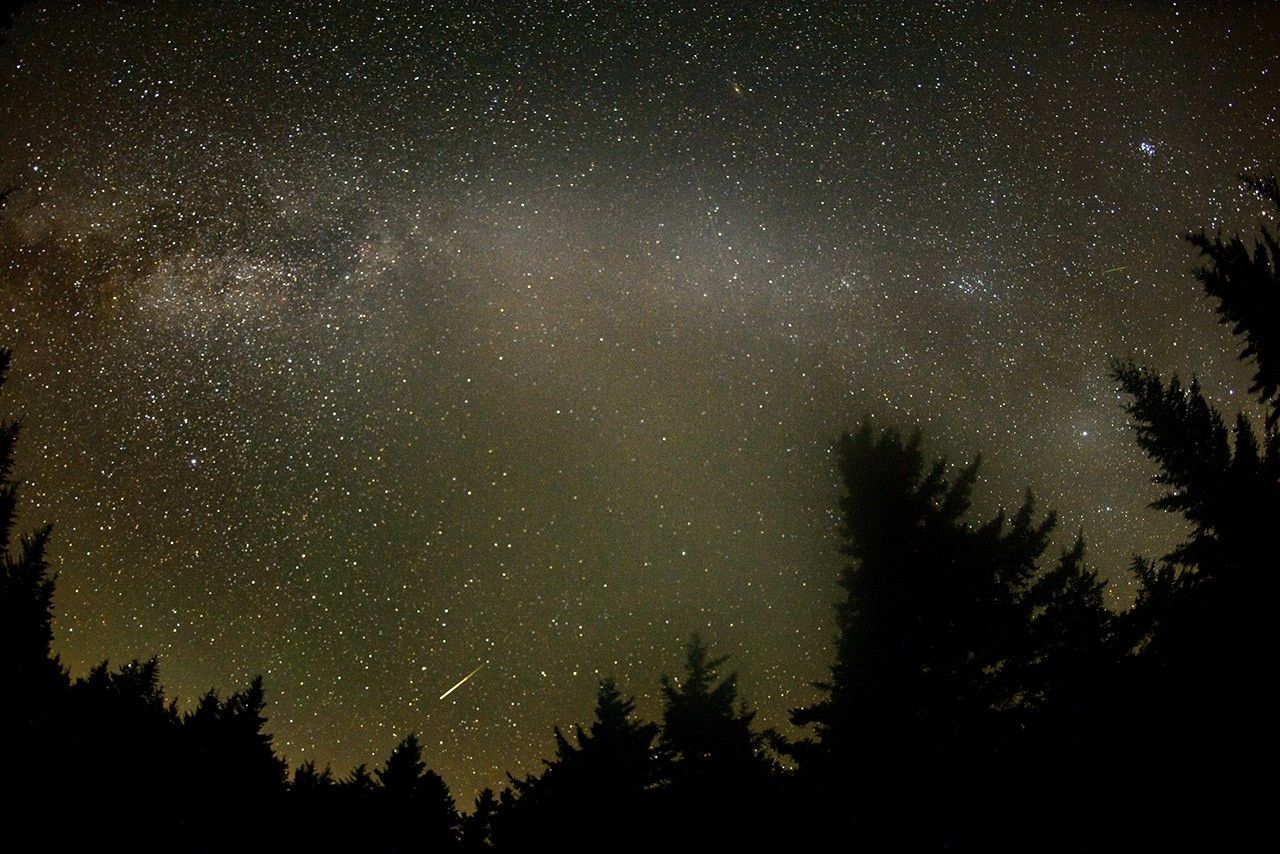
Global Space News: do all meteorites originate from just a few asteroids?
As fragments of celestial bodies, meteorites are nature’s sample return missions. Although meteorites inevitably experience contamination from the Earth’s environment, these space rocks are extensively studied to learn about the formation of the planets in our Solar System.
The majority of meteorites are thought to have originated from the main asteroid belt, which sits between Mars and Jupiter. Collisions between asteroids in this region create rocky debris, which can drift inwards towards the terrestrial planets and be hooked by the Earth’s gravity.

However, recent research led by a European team and published in the international journal Nature, has indicated that the origins of our meteorite collection might not be as varied as previously supposed. Estimates of the age of the meteorites, and comparison with likely asteroid parents, suggests that three recent break-ups of large asteroids could account for approximately 70% of the known meteorites. If our meteorite collection does indeed stem from such a small number of celestial objects, any studies will suffer from significant bias.
Yada Toru from the Astromaterials Science Research Group notes that this result should be considered seriously in scientific studies, but also injects a note of caution. The Hayabusa2 and OSIRIS-REx sample return missions respectively conducted by JAXA and NASA provided a rare opportunity to examine rock from a known asteroid in the laboratory. The samples returned from asteroids Ryugu and Bennu resemble the same meteorite type, but the observations of the two asteroids differ. Identifying the type of asteroid from which meteorites originated is therefore not a guaranteed game.
This is a very interesting result in which the manuscript indicates that three large impact events have resulted in the formation of the three asteroid families, Karin, Koronis, and Veritas, and that these produce 70% of the meteorites that fall to Earth. The research should be highly evaluated. The authors focussed on distinct peaks in the cosmic ray exposure age of meteorites—examined based on the abundance of cosmogenic nuclides—and estimate the original impact event corresponding to each peak by calculating the orbital evolution of asteroid families.
Yada Toru, Astromaterials Science Research Group
However, it is notable that samples returned from the asteroids Ryugu and Bennu, which have slightly different types based on their reflectance spectrum, resemble the same types of meteorites. This indicates that it is difficult to estimate parent bodies of meteorites from only the spectral types of asteroids. We therefore have to be careful when interpreting the result that 70% of the meteorite parent bodies originate from three families, which is based on the orbital properties and spectral types of the asteroids, considering this inconsistency between the spectral types and the real returned samples from Ryugu and Bennu. This shows the importance of sample return missions in clarifying this result and gaining a true perspective on our Solar System.

Hayabusa2 Project Engineer Saiki Takanao points to a further complication: fragments of the same asteroid might be very different. In particular, results from the sample returned from asteroid Ryugu showed that the uppermost layer of asteroid material may have a different composition due to space weathering. To allow for this, the Hayabusa2 mission took two samples from different locations and depths on asteroid Ryugu.

Even on the same asteroid, samples may be very different depending on the location. Therefore, we believe that multiple sampling and access to samples at different depths are crucial. If we are going all the way to a distant, unknown body, we want to explore it thoroughly. Don’t you think so?
Saiki Takanao, Hayabusa2 Project Engineer
Despite the uncertainty in identifying the parent asteroid, Yada does note that the rarity of the Ryugu and Bennu samples supports the suggestion that the meteorite population is not representative of the asteroids.
Additionally, the fact that both returned asteroid samples from carbonaceous asteroids resemble very rare types of meteorites which consist of only <0.01% of the meteorite falls on Earth indicates that meteorites are biased compared to the real abundance of small bodies in our Solar System. This is consistent with the bias indicated by this manuscript that only three asteroid impact events would result in 70% of meteorite falls on Earth
Yada Toru
During a sample return mission, there is no uncertainty in the parent asteroid and careful curation of the sample can avoid contamination with Earth. Hayabusa2 Mission Manager Yoshikawa Makoto also explains that the target for these missions have been Near Earth Objects, which must also have been delivered from the asteroid belt. This provides a good comparison to the meteorites, although we should remember that it also comes with a bias.

It is an interesting result that meteorites may be biased to originate from only a few asteroids. Our sample return missions have visited asteroid NEOs; Near Earth Objects. The majority of NEOs are thought to have changed their orbit from that in the asteroid belt that sits between the orbits of Mars and Jupiter. Reasons for this orbit change include resonance or a close approach to Mars. We know that orbits can gradually change due to factors such as the Yarkovsky effect (push from thermal radiation), and then the asteroid can reach a resonance or approach Mars. NEO orbits are highly chaotic, so it is not possible to accurately calculate the orbit of every NEO over a long period of time. There is also a bias in the fact that more NEOs are discovered if they approach the Earth.
Yoshikawa Makoto, Hayabusa2 Mission Manager
The mechanics of developing a sample return mission does place criteria for selecting an asteroid, explains Hayabusa2 Project Manager Tsuda Yuichi. However, these do not result in strong limits on the variety of asteroids that could be explored. In which case, what might we discover in the material we gather beyond the Earth?
When deciding on a celestial target for an asteroid sample return mission, there are three factors to consider: (i) it must be reachable from an orbital dynamics perspective, (ii) the properties of the celestial body, such as the size, rotational state, and shape, must be suitable for sample collection, and (iii) it needs to be scientifically attractive. So long as these three conditions are met, it is possible to explore a wide variety of celestial bodies.
Tsuda Yuichi, Hayabusa2 Mission Manager
How will humanity’s view of science, life and the Universe change if we obtain material that cannot fall to Earth as meteorites? We want to respond to such curiosity with technology.

The smallest bodies in our Solar System are packed with clue to understanding how our planets formed. But it is clear we have only just begun to explore this treasure box.
“Global space news” is a chance for us to highlight important developments across the world and share our excitement of these achievements.
Further information:
Journal paper: Young asteroid families as the primary source of meteorites (Nature)
The JAXA Hayabusa2 mission website
The NASA OSIRIS-REx mission website (external link)
Cosmos article: Keeping out the Earth: Protecting the asteroid Ryugu sample from contamination
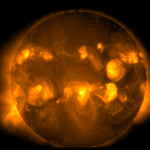 Previous Post
Previous Post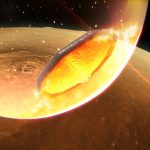 Next Post
Next Post